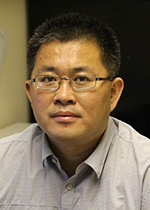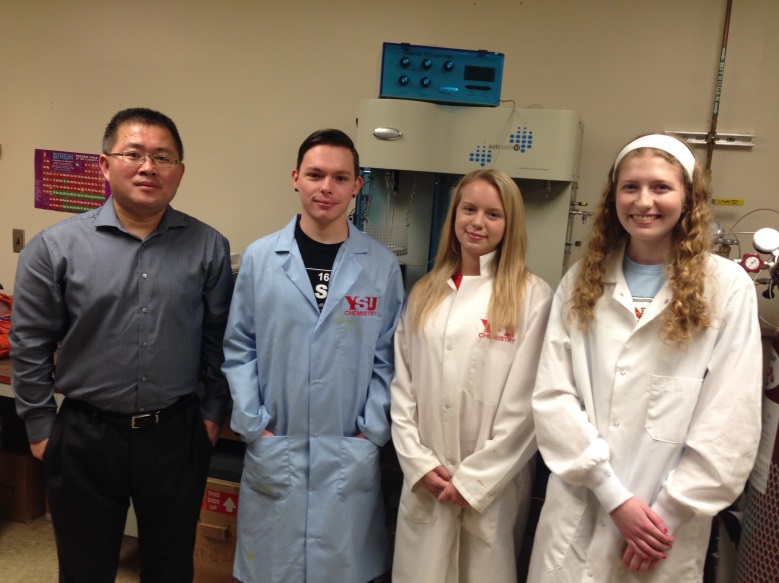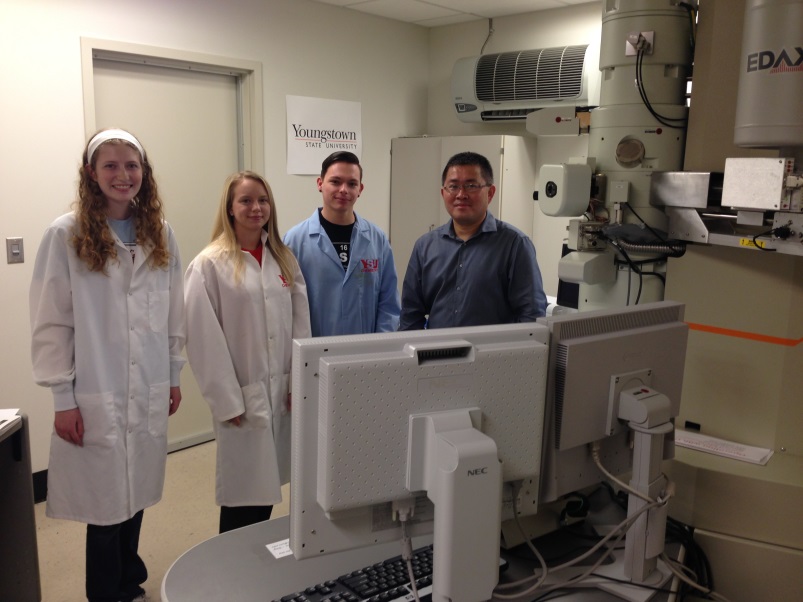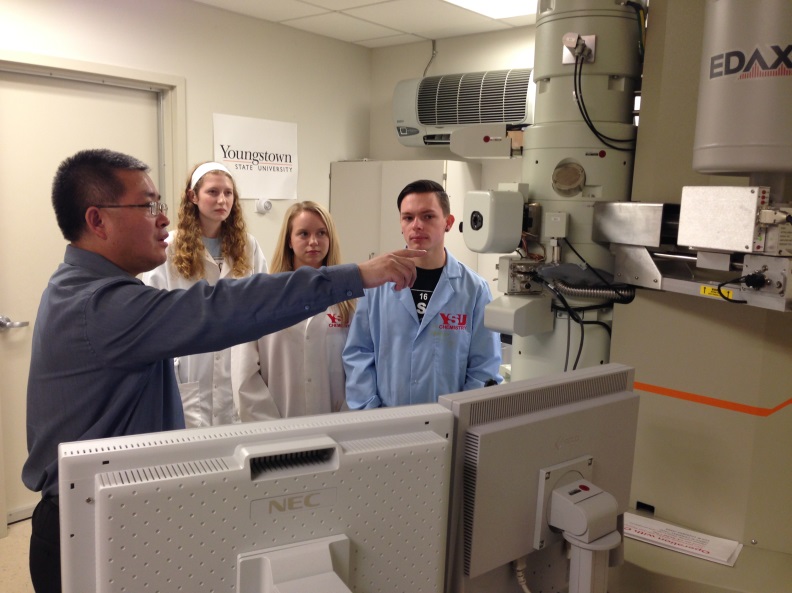Dr. Ruigang Wang
 Department of Chemistry
Department of Chemistry
Youngstown State University
Morphology-Controllable Synthesis and Characterization of Low-Temperature Active Rare-Earth Oxide Nanocatalysts
Dr. Ruigang Wang studies the structure and property relations of rare-earth oxide minerals. His ACS PRF Undergraduate New Investigator grant is to determine the atomic-level structure and chemistry of these materials, using scanning and transmission electron microscopy, energy-dispersive X-ray spectroscopy, and electron energy loss spectroscopy of rare-earth oxides. His research interest is to understand how the shapes of these materials may affect their catalytic properties, with particular interest in how cerium oxide (CeO2) minerals catalyze the conversion of carbon monoxide (CO) to carbon dioxide (CO2).
Wang and his students have synthesized CeO2 nanocrystals, using different starting materials and experimental conditions, and then examined the crystallinity and particle shape/size of the precipitated nanocrystals using electron microscopy. Their results indicate that the shape and size of Ce(OH)3 "seed crystals" play a critical role in the ultimate structure formed, as they have observed 3-4 nanometer to 6-10 nanometer-sized nanosheets, nanorods, nanocubes, nanocuboids, and irregular shapes. The largest particles with the best crystallinity were formed from Ce(NO3)3 precursors undergoing hydrothermal reactions at 150°C for 48 hours.
Dr. Wang finds nanoscale chemistry fascinating, and continues to study catalysis of carbon monoxide by metal-CeO2 nanostructure: “We feel that we are really designing new materials from the nanoscale or even at the atomic level.” He hopes that the results of this research could lead to catalytic converters with reduced amounts of expensive noble-metal materials, and improved low-temperature performance and long-term thermal stability. Wang noted that “PRF played a critical role in assisting our research and student recruitment and training” as eight Youngstown State undergraduates and three local high-school students have obtained hands-on research experience in his lab.
Transformation of carbon monoxide to carbon dioxide has implications for fundamental petroleum science, and Wang hopes that this research may find practical applications: “My goal right now is to have a fundamental understanding of how metal-CeO2 interactions influence catalytic activity.” His research on how the shapes of CeO2 nanocrystals influence metal-cerium dioxide interactions, and the catalytic properties of these materials relate to temperature of the chemical reaction, will be supported by a 2014 NSF research grant based on initial results of this PRF-supported research.
After earning his Ph.D. from the School of Materials of Arizona State University, and a post-doctoral fellowship in the Materials Sciences Division of Lawrence Berkeley National Laboratory, Dr. Wang joined the Chemistry faculty at Youngstown State University in 2010.
Grant #52323-UNI10: Read Wang's Annual Report
 Dr. Ruigang Wang and his undergraduate researchers 2015
Dr. Ruigang Wang and his undergraduate researchers 2015 From right to left Prof. Wang, Thomas Stoner, Samantha Mock, and Cassy Shaffer.
From right to left Prof. Wang, Thomas Stoner, Samantha Mock, and Cassy Shaffer.











